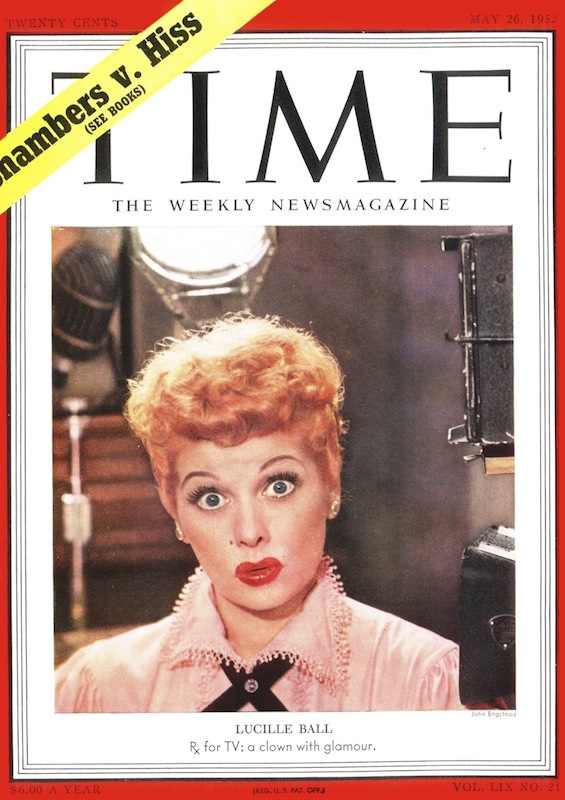
It’s obvious that women in comedy are having a good couple of years, with names like Tina Fey, Amy Poehler, Melissa McCarthy and Amy Schumer often dominating discussion of the art — but even as those funny females get their due, it’s worth remembering that a woman was already dominating the field more than 60 years ago.
When I Love Lucy premiered on this day, Oct. 15, in 1951, TIME’s TV listings acknowledged as a “a triumph of bounce over bumbling material,” an “engagingly” funny show starring a good actress and her “adequate” husband. Yet within four months it was the fourth most popular TV show in the United States; within another three months, it was number one. As TIME reported in May of 1952, the show set a world record as “the first regularly scheduled TV program to be seen in 10 million U.S. homes” on the strength of well-written scripts and high-quality slapstick. The show’s estimated total audience consisted of more than 30 million people, or nearly a fifth of the whole population of the country.
In reaching that level of success, Lucille Ball dethroned several established — and male — comedians. As TIME explained in a 1952 cover story about the star:
An ex-model and longtime movie star (54 films in the past 20 years), Lucille Ball is currently the biggest success in television. In six months her low-comedy antics, ranging from mild mugging to baggy-pants clowning, have dethroned such veteran TV headliners as Milton Berle and Arthur Godfrey. One of the first to see the handwriting on the TV screen was Funnyman Red Skelton, himself risen to TV’s top ten. Last February, when he got the award from the Academy of Television Arts & Sciences as the top comic of the year, Skelton walked to the microphone and said flatly: “I don’t deserve this. It should go to Lucille Ball.”
Ball got her start as a model who went by the name Diane Belmont (after Belmont Park Race Track) and later as a contract player at RKO studio, at which point she took on her trademark redheaded look. Though she started out making $50 a week in her RKO days, I Love Lucy was estimated to have grossed about $1 million during its first season.
Even though she was an undisputed success, Ball — like so many of today’s comediennes — still had to contend with set expectations of what a female comedian should be or look like. Her past as a model set her apart, as fans coveted her clothes as well as her sense of humor, and she was elevated above her colleagues by the fact that she looked sexy, not funny. However, coverage of I Love Lucy indicates that there was actually less preoccupation with her gender than there is when it comes to today’s stars, even though the character she portrayed might seem more stereotypically constrained by gender than today’s TV characters are. Critics were surprised that this one family sitcom was so much more beloved than all the other sitcoms on the air, but that surprise wasn’t because the star was a woman. Ball’s skill at physical comedy was compared to Charlie Chaplin’s, and her ability wasn’t subject to extra qualifiers.
Which is not to say that Ball’s gender didn’t matter. Rather, she turned the only substantial difference between male comedians and female comedians into a mega Hollywood win when, in 1953, she and her I Love Lucy character both gave birth on the same day.
Read the full cover story about Lucille Ball, here in TIME’s archives: Sassafrassa, the Queen
More Must-Reads From TIME
- The 100 Most Influential People of 2024
- Coco Gauff Is Playing for Herself Now
- Scenes From Pro-Palestinian Encampments Across U.S. Universities
- 6 Compliments That Land Every Time
- If You're Dating Right Now , You're Brave: Column
- The AI That Could Heal a Divided Internet
- Fallout Is a Brilliant Model for the Future of Video Game Adaptations
- Want Weekly Recs on What to Watch, Read, and More? Sign Up for Worth Your Time
Write to Lily Rothman at lily.rothman@time.com